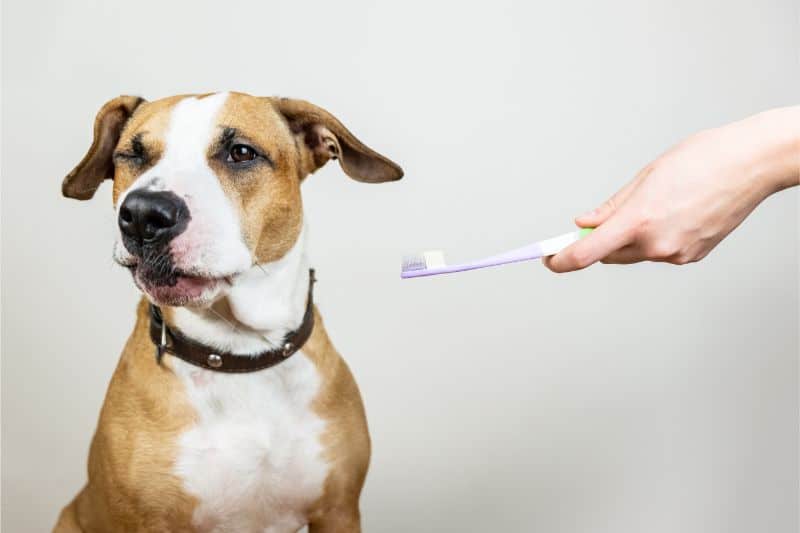Those Pearly Whites: The Importance of At-Home Pet Dental Care

The quality of your pet’s teeth may not be up there on the list of priorities, but when it comes to their health, it should be. Most pets over the age of 3 have at least the beginnings of dental disease. Untreated dental disease not only can lead to tooth loss, pain, and abscess, but it can also create health problems with the major organs of the body, like the heart and liver.
The great news is that you can help protect your best friend with at home pet dental care. Your team at Bowman Veterinary Hospital is here with some tips to keep that beautiful smile healthy!
Brushing Your Pet’s Teeth
Regular tooth brushing is a key part of good dental care for your pet, but many pet owners are reluctant to do this. It’s actually an easy process and can keep your pet from having the plaque and tartar that lead to periodontal disease! Follow these easy steps to brushing your pet’s teeth with ease.
- Make sure you have the right toothbrush and paste that is designed for your pet’s breed and size.
- Find a bright area and have your pet seated in front of you. Get them used to having their mouths touched by rubbing the muzzle, face, and then gently the gums and teeth using a toothbrush or finger brush.
- Start by opening your pet’s lip over the front teeth and gently brushing the teeth in an up and down, then side to side motion. As your pet gets used to this, advance to the back of the teeth and then the insides. Inspect your pet’s mouth for signs of problems, such as redness, bleeding, broken teeth, etc.
- Reward your pet with a small treat and praise.
While we recommend brushing your pet’s teeth daily, this may not always be feasible. Aim for a minimum of a few times per week to ensure good dental health.
If you notice any problems with your pet’s gums, teeth, or mouth, schedule an appointment with us for a thorough examination.
Other Ideas for At-Home Pet Dental Care
Many pet owners will ask if dental chews can replace tooth brushing. Unfortunately, no. It can contribute to the time you take brushing, but it cannot get a thorough clean, and it doesn’t give you the opportunity to inspect your pet’s mouth.
Be mindful of the types of dental chews you choose. The American Veterinary Dental Council has a list of approved dental chews (look for the seal before purchasing). Avoid bones and other animal products as these can cause broken teeth and the risk of ingesting fragmented bones.
Make sure you are feeding your pet a nutritious diet as recommended by your veterinarian. A kibble-based diet is better in terms of keeping your pet’s teeth clean; however, don’t switch your pet from wet to dry food without consulting your veterinarian.If you have any questions about at-home pet dental care, or would like to schedule an appointment, please contact us.


